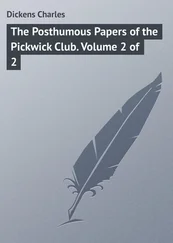Hubert Bancroft - The Native Races [of the Pacific states], Volume 5, Primitive History
Здесь есть возможность читать онлайн «Hubert Bancroft - The Native Races [of the Pacific states], Volume 5, Primitive History» — ознакомительный отрывок электронной книги совершенно бесплатно, а после прочтения отрывка купить полную версию. В некоторых случаях можно слушать аудио, скачать через торрент в формате fb2 и присутствует краткое содержание. Жанр: foreign_antique, foreign_prose, на английском языке. Описание произведения, (предисловие) а так же отзывы посетителей доступны на портале библиотеки ЛибКат.
- Название:The Native Races [of the Pacific states], Volume 5, Primitive History
- Автор:
- Жанр:
- Год:неизвестен
- ISBN:нет данных
- Рейтинг книги:5 / 5. Голосов: 1
-
Избранное:Добавить в избранное
- Отзывы:
-
Ваша оценка:
- 100
- 1
- 2
- 3
- 4
- 5
The Native Races [of the Pacific states], Volume 5, Primitive History: краткое содержание, описание и аннотация
Предлагаем к чтению аннотацию, описание, краткое содержание или предисловие (зависит от того, что написал сам автор книги «The Native Races [of the Pacific states], Volume 5, Primitive History»). Если вы не нашли необходимую информацию о книге — напишите в комментариях, мы постараемся отыскать её.
The Native Races [of the Pacific states], Volume 5, Primitive History — читать онлайн ознакомительный отрывок
Ниже представлен текст книги, разбитый по страницам. Система сохранения места последней прочитанной страницы, позволяет с удобством читать онлайн бесплатно книгу «The Native Races [of the Pacific states], Volume 5, Primitive History», без необходимости каждый раз заново искать на чём Вы остановились. Поставьте закладку, и сможете в любой момент перейти на страницу, на которой закончили чтение.
Интервал:
Закладка:
95
'Il est très-remarquable aussi que parmi les hiéroglyphes mexicains on ne découvre absolument rien qui annonce le symbole de la force génératrice, ou le culte du lingam , qui est répandu dans l'Inde et parmi toutes les nations qui ont eu des rapports avec les Hindoux.' Vues , tom. i., p. 275.
96
Recherches Asiatiques , tom. i., p. 215.
97
Vues , tom. i., p. 276.
98
See vol. iii., p. 501, et seq.; see also Brasseur de Bourbourg , Quatre Lettres , pp. 202-8.
99
See vol. iv., p. 163, for cut of this ornament. 'D'abord j'ai été frappé de la ressemblance qu'offrent ces étranges figures des édifices mayas avec la tête de l'éléphant. Cet appendice, placé entre deux yeux, et dépassant la bouche de presque toute sa longueur, m'a semblé ne pouvoir être autre chose que l'image de la trompe d'un proboscidien, car le museau charnu et saillant du tapir n'est pas de cette longueur. J'ai observé aussi que les édifices placés à l'Est des autres ruines offrent, aux quatre coins, trois têtes symboliques armées de trompes tournées en l'air; or, le tapir n'a nullement la faculté d'élever ainsi son museau allongé; cette dernière considération me semble décisive.' Waldeck , Voy. Pitt. , p. 74. 'There is not the slightest ground for supposing that the Mexicans or Peruvians were acquainted with any portion of the Hindoo mythology; but since their knowledge of even one species of animal peculiar to the Old Continent, and not found in America, would, if distinctly proved, furnish a convincing argument of a communication having taken place in former ages between the people of the two hemispheres, we cannot but think that the likeness to the head of a rhinoceros, in the thirty-sixth page of the Mexican painting preserved in the collection of Sir Thomas Bodley; the figure of a trunk resembling that of an elephant, in other Mexican paintings; and the fact, recorded by Simon, that what resembled the rib of a camel (la costilla de un camello) was kept for many ages as a relic, and held in great reverence, in one of the provinces of Bogota, – are deserving of attention. Kingsborough's Mex. Antiq. , vol. viii., p. 27. 'On croit reconnoître, dans le masque du sacrificateur (in one of the groups represented in the Codex Borgianus ) la trompe d'un éléphant ou de quelque pachyderme qui s'en rapproche par la configuration de la tête, mais dont la mâchoire supérieure est garnie de dents incisives. Le groin du tapir se prolonge sans doute un peu plus que le museau de nos cochons; mais il y a bien loin de ce groin du tapir à la trompe figurée dans le Codex Borgianus . Les peuples d'Aztlan, originaires d'Asie, avoient-ils conservé quelques notions vagues sur les éléphans, ou, ce qui me paroît bien moins probable, leurs traditions remontoient-elles jusqu'à l'époque où l'Amérique étoit encore peuplée de ces animaux gigantesques, dont les squelettes pétrifiés se trouvent enfouis dans les terrains marneux, sur le dos même des Cordillères mexicaines? Peut-être aussi existe-t-il, dans la partie nord-ouest du nouveau continent, dans des contrées qui n'ont été visitées ni par Hearne, ni par Mackensie, ni par Lewis, un pachyderme inconnu, qui, par la configuration de sa trompe, tient le milieu entre l'éléphant et le tapir.' Humboldt , Vues , tom. i., pp. 254-5.
100
Squier's Observations on Memoirs of Dr Zestermann , in Amer. Ethno. Soc., Transact. , April, 1851; Atwater , in Amer. Antiq. Soc., Transact. , vol. i., pp. 196-267.
101
In this, as in all other theories, but little distinction is made between the introduction of foreign culture, and the actual origin of the people. It would be absurd, however, to suppose that a few ships' crews, almost, if not quite, without women, cast accidentally ashore in Peru in the thirteenth century, should in the fifteenth be found to have increased to a mighty nation, possessed of a civilization quite advanced, yet resembling that of their mother country so slightly as to afford only the most faint and far-fetched analogies.
102
Manco 'afterwards received from his subjects the title of "Capac," which means sole Emperor, splendid, rich in virtue.' Ranking's Hist. Researches , p. 56. He cites for this, Garcilasso de la Vega , book i., chap. xxvi., a work on which he relies for most of his information.
103
A relation of two Russe Cossacks trauailes, out of Siberia to Catay , &c., in Purchas his Pilgrimes , vol. iii., p. 798.
104
Ranking's Hist. Researches , pp. 171-2.
105
Quoted by Ranking, Hist. Researches , p. 183, from Abul Ghazi Bahadur, History of the Turks, Moguls, and Tartars , vol. i., p. 11.
106
Du Halde , Empire of China , vol. i., p. 275. Quoted by Ranking, Hist. Researches , p. 197-8.
107
Concerning the Mongolian origin of the Peruvians, see: Ranking's Hist. Researches . Almost all other writers who have touched on this subject, are indebted to Mr Ranking for their information and ideas. See also Humboldt , Exam. Crit. , tom. ii., p. 67, et seq.; Malte-Brun , Précis de la Géog. , tom. vi., pp. 293-4; Forster's Voyage Round the World . Grotius thinks that the Peruvians must be distinct from other American people, since they are so acute, and believes them, therefore, to be descended from the Chinese. Wrecks of Chinese junks have been found on the coast. Both adore the sun, and call the king the 'son of the sun.' Both use hieroglyphics which are read from above downwards. Manco Capac was a Chinaman who gave these settlers a government founded on the Chinese system. Montanus , Nieuwe Weereld , pp. 32-3. De Laet, replying to these arguments, considers that the acuteness of the Peruvians does not approach that of the Chinese. Nowhere in Peru have the cunning and artistic works of Chinese artificers been seen. The Chinese junks were too frail to withstand a storm that could drive them across the Pacific. And if the voyage were intentional they would have sought nearer land than the coasts of Mexico or Peru. The religion of the two countries differs materially; so does their writing. Manco Capac was a native Peruvian who ruled four hundred years before the coming of the Spaniards. Novus Orbis , in Id. , pp. 33-4. Mr Cronise, in his Natural Wealth of California , p. 28, et seq., is more positive on this subject than any writer I have yet encountered. I am at a loss to know why this should be, because I have before me the works that he consulted, and I certainly find nothing to warrant his very strong assertions. I quote a few passages from his work. 'The investigations of ethnologists and philologists who have studied the Hindoo, Chinese, and Japanese annals during the present century, have brought to light such a chain of evidence as to place beyond doubt that the inhabitants of Mexico and California, discovered by the Spaniards, were of Mongolian origin.' Hindoo, Chinese, and Japanese annals all agree that the fleet of Kublai Khan, son of Genghis Khan, was wrecked on the coast of America. 'There are proofs clear and certain, that Mango Capac, the founder of the Peruvian nation, was the son of Kublai Khan … and that the ancestors of Montezuma, of Mexico, who were from Assam, arrived about the same time… Every custom of the Mexicans, described by their Spanish conquerors, proves their Asiatic origin… The strange hieroglyphics found in so many places in Mexico, and from California to Canada, are all of Mongolian origin'… 'Humboldt, many years ago, conjectured that these hieroglyphics were of Tartar origin. It is now positively known that they are… The armor belonging to Montezuma, which was obtained by Cortez and is now in the museum at Madrid, is known to be of Asiatic manufacture, and to have belonged to one of Kublai Khan's generals.' It is unnecessary to multiply quotations, or to further criticise a work so grossly misleading. The following unique assertion is a fair specimen of Mr Cronise's vagaries when treading on unfamiliar ground: '"Alta," the prefix which distinguishes Upper from Lower California, is a word of Mongolian origin, signifying "gold."' The most superficial knowledge of Spanish or of the history of California, would have told Mr Cronise that 'alta' simply means 'high,' or 'upper,' and that the name was applied to what was originally termed 'New' California, in contradistinction to 'Baja' or 'Lower' California.
Читать дальшеИнтервал:
Закладка:
Похожие книги на «The Native Races [of the Pacific states], Volume 5, Primitive History»
Представляем Вашему вниманию похожие книги на «The Native Races [of the Pacific states], Volume 5, Primitive History» списком для выбора. Мы отобрали схожую по названию и смыслу литературу в надежде предоставить читателям больше вариантов отыскать новые, интересные, ещё непрочитанные произведения.
Обсуждение, отзывы о книге «The Native Races [of the Pacific states], Volume 5, Primitive History» и просто собственные мнения читателей. Оставьте ваши комментарии, напишите, что Вы думаете о произведении, его смысле или главных героях. Укажите что конкретно понравилось, а что нет, и почему Вы так считаете.
![Hubert Bancroft The Native Races [of the Pacific states], Volume 5, Primitive History обложка книги](/books/749157/hubert-bancroft-the-native-races-of-the-pacific-s-cover.webp)
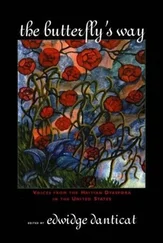
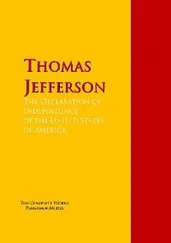
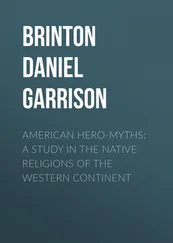

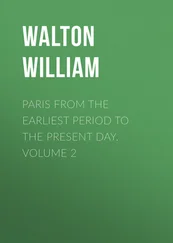


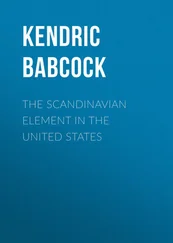
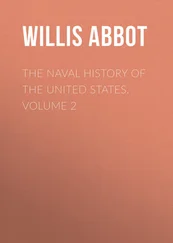
![Hubert Bancroft - The Native Races [of the Pacific states], Volume 1, Wild Tribes](/books/750126/hubert-bancroft-the-native-races-of-the-pacific-s-thumb.webp)
